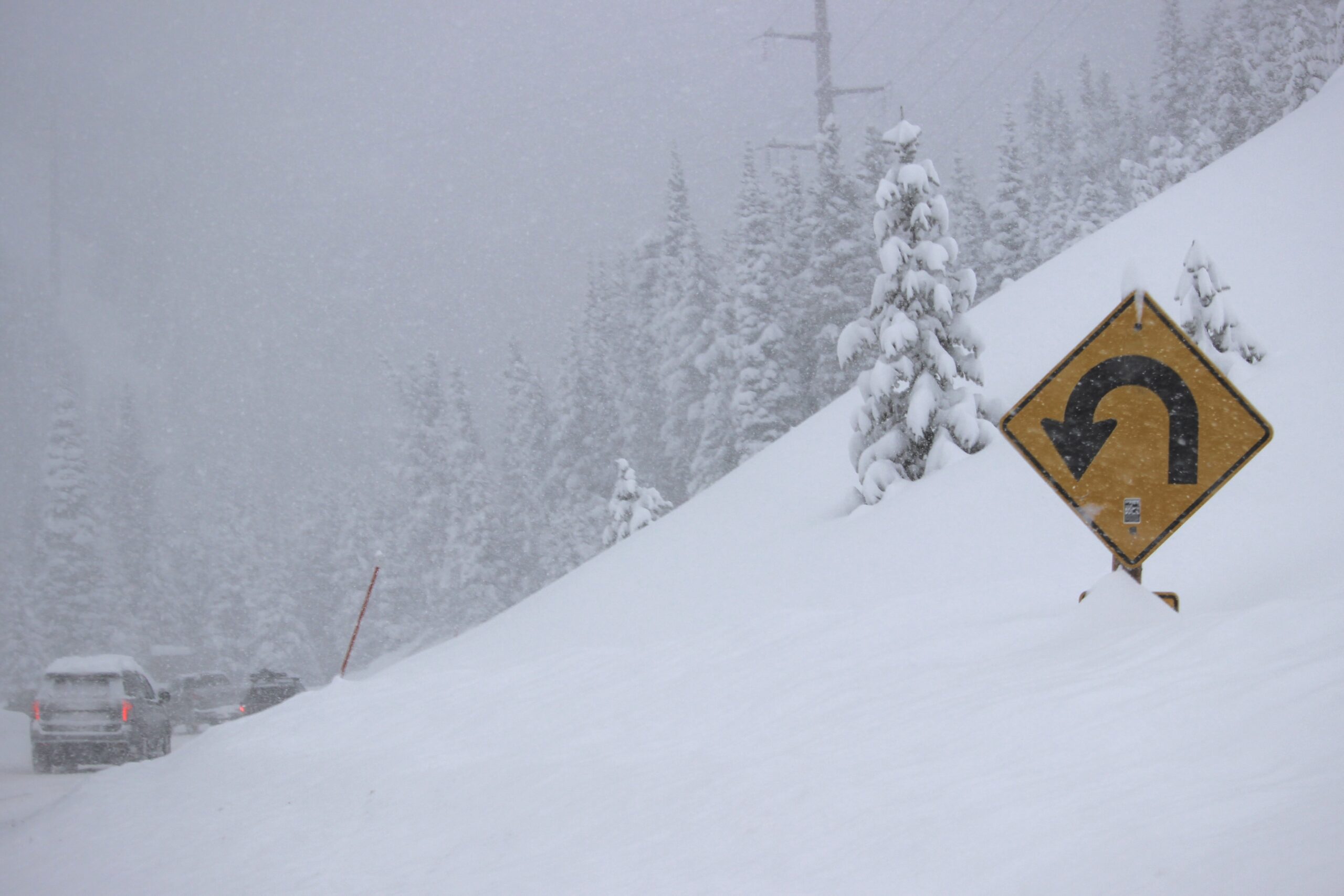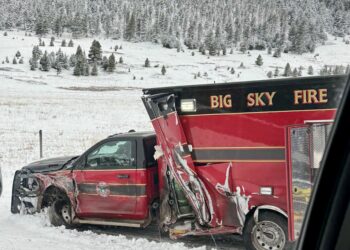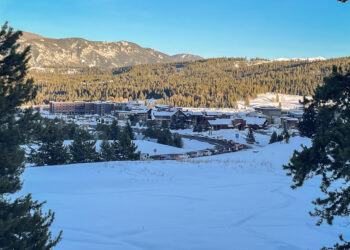Big Sky could re-draw local districts to improve services accessible to taxpayers
By Jack Reaney STAFF WRITER
As the Big Sky Resort Area District creates a capital improvement plan for Big Sky’s long-term needs, Executive Director Daniel Bierschwale is expecting a massive number.
“We might be looking at a number with a ‘B’ next to it,” he told EBS.
As this community faces an uphill climb to meet all of its of infrastructure needs—massive housing investments, dramatic transportation re-design, water and sewer improvement, scale of quality child care, climate action goals—BSRAD is rolling out a plan to remove weight from Big Sky’s backpack.
For now, that plan is the Big Sky Roadmap, a document introduced and praised at the April 19 BSRAD board meeting.
The Roadmap aims to “[get] the infrastructure in place that will make this community more livable into the future and help address some longstanding tax issues that this community at large has been aware of,” Bierschwale said.
BSRAD board member Kevin Germain said he’s been exploring these ideas for many years. He told EBS that if the Big Sky community becomes educated on these efforts, he believes there would not be a single person opposed.
The public document, which begins on page 6 of the April meeting’s agenda packet, states community goals, challenges and potential solutions. It places infrastructure and public needs on a timeline that stretches to the end of the decade.
BSRAD’s Roadmap is backed by a 30-page legal memo that explains legal steps necessary for change. It primarily describes if, and how, certain service districts—specifically school, library, and hospital—could better represent and serve the entire Big Sky community. Water and sewer, fire, parks and trails and transportation are currently Big Sky’s only districts that cross into Madison County, the location of Big Sky Resort and the private clubs.
That’s an issue for Big Sky residents living in Madison County, whose property taxes support the Ennis School District—where they cannot enroll children—and Madison Valley’s hospital and library districts. Both the hospital and library served by those districts are in Ennis and not reasonably accessible.
It takes nearly two hours and roughly 100 miles to drive to Ennis from Big Sky’s slice of Madison County, with the exception of the relatively direct—but private—Jack Creek Road.

Furthermore, although only 15% of Madison County voters live in Big Sky, those taxpayers fund a disproportionate share of Madison County entities. Big Sky’s Madison County property tax comprise upwards of 80% of the total tax revenue for all three of those districts, Bierschwale confirmed. In 2021, Big Sky taxpayers sent $2.6 million to the Ennis School District, $1.7 million to Madison Valley Hospital District, and $400,000 to the Madison Valley Library District.
Despite the outsized impact on Madison County’s tax base, the Roadmap states, Big Sky doesn’t have enough voters to elect someone to the county commission or the school, hospital and library district boards.
Bierschwale said, “I don’t know if I’d call it taxation without representation, but I would call it a broken process.”
He gave a shoutout to Bill Todd, Madison County commissioner, for procuring a long-awaited polling station for Big Sky voters with help from the Big Sky Fire Department. Until now, Big Sky voters have needed to drive hours to submit Madison County votes.
Leaving, creating and annexing territory into districts
In the Roadmap section titled “Potential Solutions,” the following proposals would serve each of Big Sky’s three main service needs.
For the school district, “align property tax revenue with student burdens” by bringing Big Sky’s Madison County taxpayers into the Big Sky School District, which currently educates 26 students from Madison County.
For the hospital, form a Big Sky Wellness District to help fund the Big Sky Medical Center and give grants to mental health and substance abuse initiatives. And again, “align property tax revenue with service burdens in Big Sky.”
And for the library, form a Big Sky Library District that supports the Friends of the Big Sky Community Library—no public library district currently exists in Big Sky.
“As we explore what this all means… the residents of Madison County [are] paying for services that are inaccessible—if we’re able to re-shuffle the deck then those services would be available for what they’re paying for,” Bierschwale said. He added that residents could have a voice in districts which apply to them, such as the ability to elect school board trustees in the district where their children attend.
These three solutions would require Big Sky’s withdrawal from the respective districts that serve Ennis. The Roadmap’s legal memo outlines how, beginning on page 17.
To create a hospital district, which can set fees, issue bonds, borrow money and levy taxes, a petition must be signed by 30% of qualified electors in the proposed territory. The memo adds—in general terms—that if a newly created district wanted to annex the Madison County portion of Big Sky, Madison County could not interfere.
Before any annexation, however, that territory would need to be withdrawn from the Madison Valley Hospital District.
That would require more than half of Big Sky property owners in Madison County to sign a petition stating that “such area will not be benefited by remaining in said district,” the memo states.
A public library district may contain territory in more than one county. To create a district—as the Big Sky community could decide to do—a petition must be signed by 15% of qualified electors. Each county-section contained within the district would need its own petition, “presented to each county’s governing body,” the memo states.
“A library district could be a game-changer for creating long-term stability for the library,” Bierschwale said. “Same with the wellness [district], same with the school, you name it.”
Changes to a school district “rests entirely in the power of the legislature,” according to the memo. A few criteria must be met:
Both districts at play—in this case, the Big Sky and Ennis school districts—must be contiguous, which is the case. Both county superintendents must grant approval, “one for the withdrawal of school district territory from one district; and the second for the annexation of territory into the district.”
Also necessary to change school district boundaries is a petition signed by 60% of registered voters in the area of Big Sky that would shift into the Big Sky School District.
The memo further states: “When considering whether to approve the petition, the county superintendent considers the best and collective interest of the students in both the receiving and transferring districts… A strong argument can be made that when children in one district cannot physically reach the schools in their district because of transportation blocks, then withdrawal from one district and annexation into another district is warranted.”
Both Big Sky and Ennis school district superintendents and school boards would need to give approval.
“If both the trustees of the receiving and transferring school districts have approved the proposed territory transfer in writing, the county superintendent shall grant the transfer,” the memo states, with ‘shall’ emphasized in bold font. A hearing for public comment is also required.
“We will need to express our opinions to decision makers that have control over the topics discussed in this roadmap,” Bierschwale said.
He emphasized that these efforts are being explored through a fiduciary lens.
“Some of this district restructuring is definitely a path forward for being able to bring [tax dollars] back,” he added.
Amending county boundaries
The Roadmap’s initial bullet-point summary (page 6-8) states that “IF the above efforts are unsuccessful, Big Sky could explore amending existing County Boundaries or creation of a new county.”
A subsequent bullet point adds, “Boundary re-alignment is very difficult politically but could potentially resolve all if not part of taxing and voter [representation] problems.”
In this case, Gallatin County could absorb a portion of Madison County, or Big Sky could also create its own county.
In the legal memo (beginning on page 40), “public safety purposes” are stated as the eligible factor to adjust county lines—because that would be the statutory avenue to do it, Bierschwale said.
A petition would need to be signed by a majority of property owners in the territory in question and submitted to the county clerk of each county. After a public hearing held by each county’s elected commissioners, “the boards of county commissioners shall either accept, reject or amend the boundary as proposed in the petition.”
If agreed upon, an election would be held including all registered voters from each county, requiring more than 50% of votes in favor on both sides.
“The county boundary is an interesting topic,” Bierschwale said. “Most of the initiatives that are outlined in that roadmap require some level of voter approval. With the counties, it’s a pretty high threshold that would be required to make meaningful change. It would be a pretty heavy lift—but nothing’s impossible.”
He reiterated that county boundary adjustment would be a last resort, should efforts including district realignment fail.
A sequence of action
The Gantt chart included in the Big Sky Roadmap illustrates the possible roll out of specific actions.

In some cases, the implementation of one step would make another impossible. Therefore, the order of operations could matter.
For example, the Roadmap’s bullet-point summary states that Targeted Economic Development Districts are not allowed inside a municipalities’ boundaries. Big Sky is currently unincorporated and has no TEDD districts, which use tax increment financing to leverage property taxes from future growth to pay for existing infrastructure challenges within that district.
Those infrastructure challenges will be outlined in the Capital Improvement Plan, expected in August 2023.
However, exploratory efforts around the benefits, drawbacks and obstacles to incorporating a municipal government of Big Sky have captured local interest in recent months. Municipal structure (incorporation) is listed as one “potential solution” in the Big Sky Roadmap, and charted as an ongoing initiative until 2028.
The legal memo lists questions “worth exploring at the appropriate time,” including how to fund municipal costs; impact on liquor licensing laws; impact on other taxing districts like transportation, library, school, fire, zoning, and water and sewer.
If Big Sky did incorporate, the expected population of between 1,000 and 5,000 people would designate the community as a third-class city. Montana cities of that tier must have a police department, mayor, city judge and at least two city council members.
And, as stated, any TEDD districts would need to be developed beforehand. Bierschwale pointed out that the nascent Gallatin Canyon County Water and Sewer District—which, if extended far enough south to include the Big Sky School District, would carry a near $50 million price tag to protect the Gallatin River and human health—would be a perfect candidate for TEDD funding.

“The sequencing in the Gantt chart will change and adapt based on the needs of the community,” Bierschwale said. “But we do know that there are some low-hanging fruits in terms of thresholds that would need to be met, votes that would need to happen.”
He added that Big Sky has a civic engagement hurdle to get over. He urged residents to register and pay attention to local elections.
“At the end of the day, civic engagement is [our] number one priority,” he said. “With the last school district vote being around 722 votes, I think it demonstrates the level of engagement that we have.”













